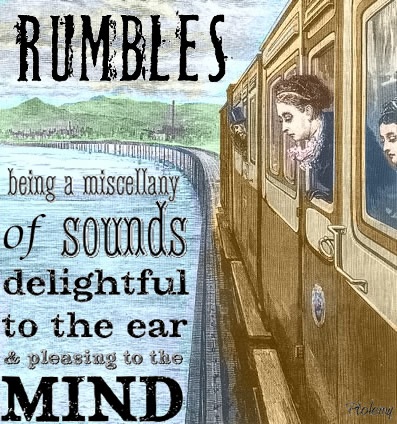
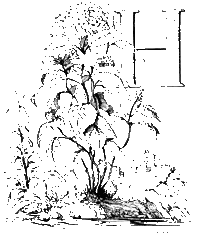 i, and welcome to the first Rumbles of 2011. Seems there is loads to get through, so I'll keep this mercifully brief and hand you over to Stefan Ek who will charm you through the first batch of musical offerings. i, and welcome to the first Rumbles of 2011. Seems there is loads to get through, so I'll keep this mercifully brief and hand you over to Stefan Ek who will charm you through the first batch of musical offerings.
Being a legend himself Merzbow here collaborates with another legend, sound artist Z’Ev. The CD titles “Spiral Right/Spiral Left” is the result of two expressive noise and sound improvisers. It took them 20 years to get together to make these two 28 + 22 minutes tracks and when hearing the result I can only sit down realising: It was worth it. Who has originally done what I don’t know, and I’m not sure I care. What I care about is the result. And it’s brilliant. It’s said they’ve remixed each others track and I suppose it’s true, that’s how they’ve done it. Some harsh noise of industrial kind split with elements of electro-acoustic ones. In my book sometimes noise artists can sound the same all the time, but with artists like these guys the sounds never stands still, it always erupts into new phases, with new angles. A lot of sounds/music/noise like this is really great listening to live, but it can be a bit “flat” hearing it in your own living-room. “Spiral Right/Spiral Left” works fine anyplace.
www.coldspring.co.uk
“Blood of a Poet (Le Sang d’un Poète)” by Steven Severin is another Coldspring release. For most of us Severin is well-known for being the bass player and founding member of Siouxie & the Banshees. After he left he continued to work in various ways with other artists as well as record on his own and release a few solo albums. The latter years his connection with movies and soundtracks has grown stronger and on his first album on this label he presents the soundtrack for a Jean Cocteau 1930 silent movie. M ost of the music is ambient, filled with samples of electronics, some percussion, voices and other instruments and effects. The texture is rich and never overloaded. I’ve never seen that particularly movie, but some other of Jean C’s experimental short movies. Here the music works really great on its own and fills my head with waves of landscapes in black and white, letting my imagination flow freely. ost of the music is ambient, filled with samples of electronics, some percussion, voices and other instruments and effects. The texture is rich and never overloaded. I’ve never seen that particularly movie, but some other of Jean C’s experimental short movies. Here the music works really great on its own and fills my head with waves of landscapes in black and white, letting my imagination flow freely.
www.coldspring.co.uk
Nichelodeon presents a very ambitious set on their new release. The set consists of the 79 minutes CD “Il gioco del silenzio” (The game of silence) and the 84 minutes DVD “Come sta Annie/How’s Annie? Twin Peaks 20th anniversary show”. The music is very theatrical with a lot of strictly composed prog elements as well as parts that sounds loosely improvised. For anyone searching for references I’m thinking of bands like U Totem or, why not, their collaborative partner Motor Totem Guild, David Kerman associated stuff, a lot of keyboards and reeds and interesting rhythmic figures, played by a truly multitalented guys. Much is circulating around the singing of Claudio Milano and the vivid use of his voice, both traditionally and as an instrument. The songs sounds more like parts of a bigger suite than anything else, gently sweeping from one to another.
The DVD is split into two parts, the first is what I suppose to be a representative concert with the band, added with guest painter and video artists; the second is the band soundtracking the last episo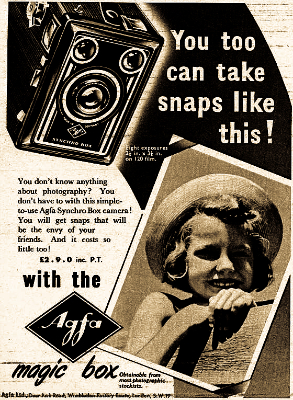 de of David Lynch’s Twin Peaks, a somewhat weird initiative I really appreciate. In conclusion then, some of you will like the structured parts best, while I myself prefer when they sometimes leave the structured flood and let the inspiration flow into a musical delta, like in the end of ‘Malamore e la Luna’. With more than 2½ hours of music for eyes and ears you’ll have to add some energy of your own into it, but, it’s well worth it. de of David Lynch’s Twin Peaks, a somewhat weird initiative I really appreciate. In conclusion then, some of you will like the structured parts best, while I myself prefer when they sometimes leave the structured flood and let the inspiration flow into a musical delta, like in the end of ‘Malamore e la Luna’. With more than 2½ hours of music for eyes and ears you’ll have to add some energy of your own into it, but, it’s well worth it.
www.lizardrecords.net63.net
www.andromedarelix.com
Hard pop? Polished post-punk Pixies? No idea, but what I hear is Abner Trio from Indianapolis, IN, USA, and their second album, “The Giant Crushes You”, a set of 10 short tracks. Their debut arrived in 2005 and it seems like they’ve spend the time since then to go deep into song-writing. The music and the lyrics are carefully handled and within the strict frames of being a trio. The arrangements are bright as well. I do really like their background vocals especially and also the moments when they dramatically narrate the lyrics in a melancholy way instead of singing them, like in old western songs. They seem to have a handicraft attitude to their making of pop music. They are not as hard as Queens of the Stone Age, but aren’t they as good?
www.joyfulrecordings.com
Albert Beger is a highly skilled Israeli sax player. On “Peacemaker” he presents a thematic six tune cycle with his Albert Beger Electroacoustic Band. The CD comes in a cover with pictured art in mixed media from Anat Berger and the colourful and varied paintings illustrate the music in a most sensitive way. The album opens with ‘Long Story’, a slow, beautiful piece with simple few-notes repetitive pattern over which Albert plays great soprano solo. It reminds me a bit by Oregon. Then follows ‘Triangle’, with Albert’s sax, Dan Benedikt’s percussion and laptop/electronics from Avi Elbaz. When the music after a few minutes comes into a melody it’s of traditional jazz ballad style. It’s nice, but I’d prefer the musicians would stretch out the opening part further more. Then it goes into rock-jazz-power and swings a lot. Next tune, ‘Facing You’, opens soft and then explodes into free territories where Ido Bukelman show how to make a great free acoustic guitar performance together with the hard-working bass of Assaf Hakimi. A well kept together band. The album ends with two lengthy pieces, 10 and 16 minutes, where electronics share space with variations of soft and expressive playing from Albert and Ido B, surrounded by bass and percussion before it concludes with a return and 2nd part of the opener, ‘Long Story’. All in all it’s a really nice album, played in a most attractive way by these five gents.
www.anovamusic.com 
Aranos is a Czeck born experimental multi-instrumental artist. When playing live he use to sing and play his violin to prepared tapes; patterns, loops, whatsoever. “Archarcha” is recorded live in Prague in 2010. It consists of four lengthy pieces of varied kind. ‘Flight of the Dung Beetle’, opens the album in an ambient dronish mood, with irregular pulsating bass and what sounds like Japanese bamboo flute. ‘Let the time’ follows, 21 minutes of pure beauty, also in an ambient dronish mood, but here with violin (both pre-recorded and played live, it seems) playing very few notes/pair of notes, like a laid back Tony Conrad with some vocals added. Next is the centre piece of the album, his already famous ‘Concerto No. 42 for Violin and HD’. It really breaks the calmness of the two previous pieces by an intensive opening with sawing violins, electro-acoustic sounds, sometimes interrupted with a couple of seconds of beautiful chords, then back again to the tentative music. Then the music change, transfers into a high note pitches on the violin/s and electro-acoustic samples. Then a moment of sawing violin solo/doubled before the 32 minutes concerto ends with doomsday kletzmer theme. It’s a majestic piece. As if Aranos already haven’t showed his capacity of variation the album closes with 8 minutes of what could be called dramatic Eastern Europe singer-song-writing. Just pre-recorded violin (or is it cello?) playing a rhythmic pattern to which Aron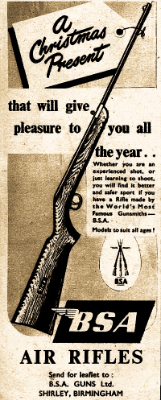 os sings and plays. It’s an impressive album. www.brainwashed.com os sings and plays. It’s an impressive album. www.brainwashed.com
“Orgonon” by G L E A M I NG (yes, that’s how they use to spell it) is a new limited release on reliable Apollolaan Records. The band is an eleven piece combo and the albums single track goes on for 32 minutes. It’s a live recorded build-up psychedelic piece with elements referring to bands like Pelt, Träd Gräs & Stenar and such. Post modern improvised psychedelic space rock which brings you into moments of aural trance. The back ground drone is build by sitar, viola and zither and to this cool few-notes bass line and laid back drums interfere. Saxophone and guitars mixes in to the sound picture. In the middle of the tune it all breaks up with a few minutes of stillness, the drones is almost not heard, violin and marimba, are softly searching for a trace, the saxophone finds a hook and off we go, the intensity raises as well as the beats of the tune, it touches freer expressions. Before the end it breaks into a stomp beat as the band plays on repetitively until it finds its conclusive climax. www.apollolaan.co.uk
Japanese artist TOMO (ah, that capital spelling again!) is most well-known for playing saxophone and hurdy gurdy in free improvisers Tetragrammaton. On his new solo album, “Butterfly Dreams and Other Guitar Works” we can hear his virtuoso skills as a guitarist. On seven tracks, lasting between 2 and 22 minutes we can hear him enter and continuously develop the tradition of guitar players like John Fahey and Robbie Basho; great, fluid picking in raga/drone style. The calmness of the music embraces you, brings you into a meditative state even though I wouldn’t call it introvert. The music is acoustic, but the sound picture is filled with space and echo into every corner of the room. Even though some of the tracks do have overdubs it’s 70 minutes of acoustic solo guitar playing, 6 or 12 strings. Few players could manage to keep the listeners attention on highest level for such a long time, but TOMO’s high skills as a player, composer and improviser makes this a surprisingly easy flowing journey. www.subvalent.com
And here’s the aforementioned Tetragrammaton with their two disc release “Elegy for Native Tongues”. TOMO on soprano sax, hurdy gurdy and effects, Nobunaga Ken on drums and percussion and Cal Lyall on guitar, gongs, bells and effects. These guys do have a history with collaborations with members of Zeni Geva, Acid Mothers Temple Tah Mahal Travellers and other psychedelic, space rock improvisers. We know the scene and we love it, don’t we? The first disc consists of five long studio improvisations. A lot of noise, twists and expressions and if you wouldn’t know better you might think it was a bigger band. With the exception of the fifth track, which is more structured and le ss free than the other, I would say the tunes differs too much from each other, but, what the heck, I love this kind of chaotic music, it forces me open up to my senses. The second disc of the set is a live recording from Tokyo 2007. Three long track, as free, noisy and chaotic as the studio ones. I have nothing to add, it’s an excellent 2 disc release. www.subvalent.com ss free than the other, I would say the tunes differs too much from each other, but, what the heck, I love this kind of chaotic music, it forces me open up to my senses. The second disc of the set is a live recording from Tokyo 2007. Three long track, as free, noisy and chaotic as the studio ones. I have nothing to add, it’s an excellent 2 disc release. www.subvalent.com
Thanks, Stefan, Now it is time to hand the baton to Steve Palmer with more fine albums that could well appeal.
"The Starseed" by Frozen Geese is an album of trippy spacerock excursions delivered by a four-piece who are well versed in the art of creating instrumental delights. The band however is more flexible than most in this genre, as three of them play drums, three can take up a bass, three a guitar and three a synthesizer. No information is given about who plays what on which track, but the moods vary throughout the album suggesting a rotating line-up: dramatic on the opening ten minute 'Self Fascination Sundae,' trippy on 'GBP-O Dubreq' which features distorted vocals, synthily poppy on the all-too-brief 'Scatter The Rosebuds' with its Ian Curtis-evoking vocals, while 'It's Another Domesday Machine' is nine minutes of crazed guitar and synth/tapes which makes for a very strange trip - great keyboards in particular on this track, but also a nice slide guitar. The bonkers 'Black Olives Green Olives' leads into the other lengthy cut on the album, 'The Starseed Transmissions,' which loops, sways, arpeggiates and patters into the listener's consciousness very nicely; my favourite cut, this one. For any fan of spacerock old and modern this band will be something to investigate. A good album.
(www.vanitycaserecords.com)
If atmospheric idiosyncracy is your thing then you could do worse than investigate the six track EP "Thorns, Brambles, White Water And Black Oak" by Rowan Coupland, which somehow manages to mix multi-voiced folk with avante-garde a rrangements. Taking Coupland's voice as the centre of the work, a multitude of other instruments and sounds underpin the passionately sung vocals. 'Up To Heaven' is almost gospel in its anthemic, choral quality - a wonderful opener - while 'I Got Born On Sunday Morning' continues the theme of the first track, this time with a hint of blues in the singing. 'Le Réveil' is a slower, more traditionally arranged track, again beautifully sung, while 'Your Best Place' brings in another voice for a different feel. 'No Window' has a gorgeous melody and perfectly judged female vocals, while EP closer 'I Was Born In The Sun' again adds a female vocal for a fragile, though memorable conclusion. Twenty four minutes of magic. rrangements. Taking Coupland's voice as the centre of the work, a multitude of other instruments and sounds underpin the passionately sung vocals. 'Up To Heaven' is almost gospel in its anthemic, choral quality - a wonderful opener - while 'I Got Born On Sunday Morning' continues the theme of the first track, this time with a hint of blues in the singing. 'Le Réveil' is a slower, more traditionally arranged track, again beautifully sung, while 'Your Best Place' brings in another voice for a different feel. 'No Window' has a gorgeous melody and perfectly judged female vocals, while EP closer 'I Was Born In The Sun' again adds a female vocal for a fragile, though memorable conclusion. Twenty four minutes of magic.
(www.willkommenrecords.com)
The four track EP "Twine" by critically acclaimed Irish singer-songwriter Pearse McGloughlin is beautifully sung and recorded, matching hand percussion, acoustic guitar and violin with McGloughlin's confident voice, elsewhere adding atmospheric female vocal backing. It's an effective mix, particularly on the title track. 'Morning Mist (The Birds)' continues this theme, adding Celtic flute, while 'Mercedes And The Kingfisher' is melancholic and slow. Closing cut 'Spherosphere' concludes the EP as it opened. Lovely stuff.
(www.walkperson.net)
Carta are an American band whose checkered career has seen them change line-ups, studios and record labels, but who now emerge with a terrif ic album "An Index Of Birds," that loosely covers shoegaze/indie territory and is released by well known slowcore post-rock lovers Silber Records. A brief electronic opener leads into the first main cut, the mesmeric 'Building Bridges,' which in its atmosphere, sinister vocals and stunning drumming courtesy Raj Ojha opens the album as it means to continue. Bass thrums, guitars evoke, and the vocals are low-key, augmented by female vocalist Lorealle Bishop. 'Hourglass' has a more positive feel - major key, not minor - while 'Small Lights' is essentially a cut-up of electronic and acoustic textures. 'The Likeness Is Undeniable,' another instrumental, bursts with power, while 'Sidereal' follows a similar path. 'Descension' is a lengthy track, eleven minutes of subtle evocation and restrained muscularity that features Lorealle Bishop's vocals, while 'Prettier At Night' is another terrific instrumental, this one quite psychedelic in places. 'Bank Of England' is a gentle cut, while 'Who Killed The Clerk?' closes the album in melodramatic and uptempo style. Still better, the album improves on repeated listens. Highly recommended. ic album "An Index Of Birds," that loosely covers shoegaze/indie territory and is released by well known slowcore post-rock lovers Silber Records. A brief electronic opener leads into the first main cut, the mesmeric 'Building Bridges,' which in its atmosphere, sinister vocals and stunning drumming courtesy Raj Ojha opens the album as it means to continue. Bass thrums, guitars evoke, and the vocals are low-key, augmented by female vocalist Lorealle Bishop. 'Hourglass' has a more positive feel - major key, not minor - while 'Small Lights' is essentially a cut-up of electronic and acoustic textures. 'The Likeness Is Undeniable,' another instrumental, bursts with power, while 'Sidereal' follows a similar path. 'Descension' is a lengthy track, eleven minutes of subtle evocation and restrained muscularity that features Lorealle Bishop's vocals, while 'Prettier At Night' is another terrific instrumental, this one quite psychedelic in places. 'Bank Of England' is a gentle cut, while 'Who Killed The Clerk?' closes the album in melodramatic and uptempo style. Still better, the album improves on repeated listens. Highly recommended.
(www.theglassbottomboat.com)
"These Times Old Times" by US outfit Lonnie Walker is an album of punky, country home songs fronted by frontman Brian Corum. Varied, in places bombastic, elsewhere folksy, some of the songs are a little by-numbers, but the good ones are good. 'Compass Comforts' is full of energy, 'Back Home Inside With You' is a weirdly affecting drawling waltz, while 'Wider Than White,' another 3/4 stomp, comes over as a kind of country grunge. The best track on the album though is 'Summertime' with its quirky lyrics and stomping arrangement. One for fans of Deer Tick and Delta Spirit.
(lonniewalker.blogspot.com)
A couple of years ago I reviewed "Fall" by All India Radio, whose Portishead-a-like grooves pleasantly passed an hour or so. New album "The Silent Surf" seems to suggest a new direction for Martin Kennedy's band however, as he ditched the first version of the album - too slick, a criticism that could be levelled at "Fall" - to concentrate on a more organic, less overtly produced work. And this process has led to a reinvigorated band, and a really good album. Generally the feel is sparse, with soft guitars, subtle keyboards and indistinct or ghostly voices, and the tracks are all fairly shor t. 'Saucer,' 'Clouds' and 'Purple Sky' are particularly fine tracks, while 'Shimmer,' the album highlight, is simply gorgeous, reminding me of some of Michael Brook's music. 'Rippled' uses acoustic guitars and a spare drumbeat to great effect. Definitely a step in the right direction for this band. t. 'Saucer,' 'Clouds' and 'Purple Sky' are particularly fine tracks, while 'Shimmer,' the album highlight, is simply gorgeous, reminding me of some of Michael Brook's music. 'Rippled' uses acoustic guitars and a spare drumbeat to great effect. Definitely a step in the right direction for this band.
(www.allindiaradio.com.au)
Here's a couple of singles now on Sturdy Records. "Japan Alive" by The Sequins is a high energy, post-punk-sounding thrash that echoes The Cardiacs but adds a little Coventry swagger to the mix. Both tracks on this double-A single hustle along like the over-caffeinated popsters they are. The Wind-Up Birds meanwhile offer a four track EP of distinctly late 'seventies pop-punk energy. Opener 'Good Shop Shuts' snarls and shouts in classic style, with vocalist Paul Ackroyd sounding more than a little like The Stranglers' Jean-Jacques Burnel. The following three tracks do the same as the opener and at least as well, with 'Some Slum Clearances' being particularly good. I can quite understand why Steve Lamacq loves this band. A resemblance to the sound of the early Stranglers in this band should not in any way put people off - great stuff!
(www.sturdy-records.co.uk)
Another single now, "Powers Of Ten" by London based quintet The See See, which evokes 'sixties sounds but adds much else to the mix. The A-side is a rolling song with multi-voiced chorus, psychedelic guitar, and is a reworking of a track by noted psych muso Bill Doss, while the B-side is a merging of guitar and banjo-fuelled sway, again with terrific West Coast style vocals. Excellent.
(www.rank-records.com)
More punky rocky indie now, and the album "The Twilight State" by Dutch pop-rockers Labasheeda, who are led by vocalist/guitarist/violinist Saskia van der Giessen. The album rocks and rollicks its way through eleven fairly short tracks, occasionally ('Headquarter') veering into quieter, calmer territory. Saskia van der Giessen can sing and play violin well, peaking on tracks like the energetic 'Indulgent,' the slightly scary 'White Leather' and album highlight 'My First Choice,' whose six and a half minute duration allows the cut to breathe and develop. Good fare for those of an indie persuasion.
(www.labasheeda.nl)
Von Sleight do instrumental avante-space and do it in their own unique way, their fifth album "New Kraut" aspiring to add dub and krautrock to the already full bag of influences. Opener 'Monkfish Head' is a melange of dubby delays and thrumming percussion; then it's off into the Hawk-esque bluster of the title track, which delivers what it says it will. 'Patchouli Mob Uprising' is slower and bass-heavy, with intriguing percussion, while 'Bipolar Dub' has a ravey feel despite its downtempo/ambient leanings. 'Cuyahoga Falls' reminds of New Order before heading off into the sample-o-delic dub of 'Emergent Pneumatic Retinopexy,' which epitomises the direction of the album as a whole. 'Miles Davis In The MRI' is trip-dub with jazz leanings, while album closer 'Sciatica' - at thirteen minutes by far the longest track on this collection of short cuts - is another trippy concoction of riffs, loops and sounds.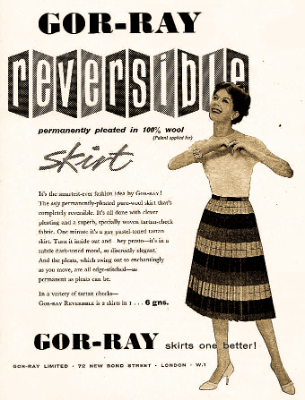 One perhaps for fans of Harvey Bainbridge, Rubber Band Banjo et al. One perhaps for fans of Harvey Bainbridge, Rubber Band Banjo et al.
(www.vonsleight.com)
"Sometime Soon" by The Curator is something of a curate's egg. The project of Norfolk muso Alistair Murphy, and including a great cast (Julianne Regan, Judy Dyble, No-Man's Steve Bingham and ex-Crimso cohort Pat Mastelotto), the album links moods and melodies, presenting its not inconsiderable musical material almost as a concept album. Opener 'On The Great North Road' swiftly merges into the first song proper, the memorable and heartfelt 'Till The End.' Alistair Murphy has a voice of emotion and gravitas, not unlike a restrained Michael McDonald in places, carrying the music well. 'The Winter's Edge' is a beautiful instrumental, before the strangeness of 'Stuck In Traffic' arrives, with its unusual sounds, effect-laden vocals and bouncing bass. 'If Time Allows Us To' brings in Diana Hare's vocals to great effect, while 'On The Spanish Main' is another avante-garde excursion. 'A Fool's Errand' matches massed vocals with sound sculptures, before the solo piano and voice of Murphy announces 'The Leaves Come Down,' which, though properly sung, manages to seem part spoken; an album highlight for sure, with a pretty melody. 'Not Us' again features beautifully recorded multiple female vocals, while 'And If And When' also conjures up magical soundscapes of voice, piano and instruments; and it features the lyrical heart of the album - "Something good is coming soon." 'The World Has Been Turned Into Water' is a brief soujourn of a song, before closing cut 'Sometime Soon' features harmonised vocals and lush instrumentation. This is one of those albums that only a British solo operator could have created - a unique vision that you take on its terms alone. While occasionally it doesn't succeed (the weird tracks jar a little) it's certainly an outstanding work, and one repaying extra visits, when the beauty of the flowing, voice-infused arrangements comes through. Highly recommended.
(www.cromerzone.co.uk)
On the Little Red Rabbit Records label comes "Spectrology" by Quiet Loner, the nom de plume of singer-songwriter Matt Hill, whose 2004 debut won UK Americana album of the year. This new one features sparse instrumentation including banjo, and additional vocals from Inge Thomson, while the lyrical concerns are the ghosts of people past and present that haunt our lives. Album highlight 'Ash Ballad' is a bitter three minutes with a nice melody, while the following 'Hide And Fear' is also a very strong cut. The minimal instrumentation works well with Matt Hill's almost confessional style of delivery, as he tells stories of life and experience. Some tracks ('Tourniquet,' 'Love Is A Risk') have a distinct Americana flavour, while others ('There Go The Ghosts') are more British in tone. A good one for quiet Sunday afternoons.
(www.quietloner.com)
Also on Little Red Rabbit Records we have "And Straight On Till Morning" by Samson & Delilah, an album of eleven folk-rock cuts recorded live over a short period in an old hall, with the band arrayed in a circle for maximum effect. Opener 'I Took Your Hand' is a strong song with a psych vibe to it, before the overtly folky 'The Ground' comes in - to great effect. 'Black Dog' opens with quiet accordion before launching into a strong 3/4 cut, while 'Brother Jon' is a gorgeous, flute-laden lament sung by Anna Zweck, who, alongside hubby Sam Lench, is the heart of this band: an album highlight without doubt. 'The Truth In Your Eyes' is a slowburn track augmented by glockenspiel, while the delicate 'Gravity Is Merciless' returns Anna Zweck to the fore. 'Begone Dull Care' is traditional and here given the full folk-rock treatment, then 'Eyes Of Son' begins delicate before morphing into a martial full-band sound. 'Rope Has Bound The Shadows Down' is another track with a haunting arrangement, here inspired by the band's producer, Brendan Williams; another highlight. 'Fish' starts slow and dreamy before acquiring a more anthemic feel, while album closer 'Silently,' with its more traditional song structure, is a fitting conclusion, choral and spine-tingling at its end. I think this is my favourite album so far on LRRR. Definitely recommended.
(www.thesamsonanddelilahshow.co.uk)
The Savings And Loan are the Scottish duo of Martin Donnelly and Andrew Bush, augmented by friends and musos. While Donnelly has been active on the Scottish scene for a while, the new album "Today I Need Light" has been some time coming. The mood is slow, dark, haunting... did I mention dark? Waltztime brooder 'Lit Out' is typical of the album, featuring deep-voiced vocals supported by minimal drums, bass an d guitar, with some additional instruments. 'Catholic Boys In The Rain' opens with Glaswegian poet Tom Leonard, before heading off into gloomy territory, though the tempo of the song adds some lustre; 'Pale Water' echoes 'Lit Out' in style and tone, though multi-tracked vocals add variety. 'Her Window' covers religion (one of Donnelly's main lyrical concerns), while 'A Pleasing Companion,' though slow and mournful, manages a kind of redemption through its added brass and other instrumentation. Slow, dark, haunting. d guitar, with some additional instruments. 'Catholic Boys In The Rain' opens with Glaswegian poet Tom Leonard, before heading off into gloomy territory, though the tempo of the song adds some lustre; 'Pale Water' echoes 'Lit Out' in style and tone, though multi-tracked vocals add variety. 'Her Window' covers religion (one of Donnelly's main lyrical concerns), while 'A Pleasing Companion,' though slow and mournful, manages a kind of redemption through its added brass and other instrumentation. Slow, dark, haunting.
(www.songbytoadrecords.com)
A couple of years ago I reviewed a solo album by one Simon Felton. Well, he's back with his old band Garfields Birthday for a roustabout rush through a dozen tunes going under the title of "More Sense Than Money." Opener 'Cool Your Jets' (written in collaboration with brother Shane, who is another band member) sets the uplifting pop-tastic tone, then it's the quieter 'Liar,' the brief 'I See Shadows' with more than a hint of the Summer of Love, and the similarly groovy 'Cambridge,' these latter two being album highlights. 'Carry On Karaoke' is stroppier, while, further on, there's a two minute delight called 'Future Song' - gotta be the single? 'King Rat' is an old GB song with a bit of autotuned Cher thrown in, while lengthy album closer 'Normality' comes over like a lost cut from '68. Some good tunes, proper vocals well sung and no messing about make this a great listen.
(www.pinkhedgehog.com)
Last year I reviewed Dominic Deane's "Ten," a fine ambient disk. Here now I have the "Lowlands EP" by Ten, which is led by the man Deane, alongside current musical partner Jonny Fryer. Six brief tracks cover half an hour, all intended to evoke the Fens; the opener matches piano and violin with a haunting ambient backing, the second whistling acoustic stringed instruments with a low drone, while the third follows a similar pattern. The fourth track brings the return of piano and violin, while the penultimate track again follows a similar path, though the piano part is more structured. The closing track is a bit of an oddity, but in a good way - it features tambourine, strummed acoustic guitar and a low, reverberated drum to terrific effect; a superb end to a haunting work. Recommended.
(www.tenthegreat.com)
Cult With No Name are a London duo, Erik Stein and Jon Boux, whose brand of haunting melancholia now finds a home on their fourth album of electro-ballads, "Adrenalin." Opener 'This Time' is essentially piano and synth, with slightly drawled, half-sung vocals that reminded me a little of The Pet Shop Boys, albeit slower, darker and lower - there's a little Mercury Rev thrown in there too. Anyway, it's a unique voice that fits the material perfectly. Most of the tracks build slowly and are presented in reverb-heavy, albeit spare, mixes. 'Lies-all-lies-all-lies' is a highlight, reminding me again of Mercury Rev, while 'Youlogy' takes a strummed acoustic guitar and a cosmic synth to under pin the narcoleptic vocals. 'Gone,' with its conversational vocal and emotive piano part, is a particularly haunting track, while 'Breathing' has more than a hint of classic 'eighties electro style, with its PSB synth and rattling drum machine - another album highlight. '7' and '-7' pair off to perfection, helped by Catherine Morgan's spectral trumpet, while album closer 'Generation That's' patters off to a quiet, satisfying conclusion. "Adrenalin" is an enigmatic work of considerable beauty, and comes recommended for that alone.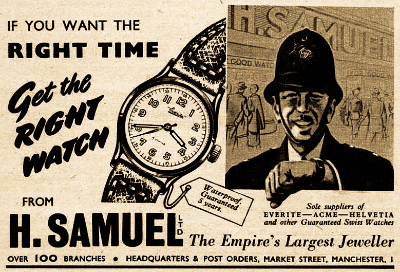
(www.cultwithnoname.com)
I do love a good hand-made release, and here to close are three of them, on San Francisco's International Corporation record label, which essentially is Martin Greer and Rachel Smith working under three pseudonyms. First up it's The Lickets, whose "Song Of The Clouds" is a document of a live event. The brief 'Fire Child Of Reason' is psychedelic and droney in a rather attractive way, before the main event, the 46 minute title track emerges. Over its extended life, this cut, which sounds like it might have been a half-remembered dream of Terry Riley, swells and ebbs, as synths, guitars and quite possibly other part-recognisable instruments come and go over the sonic tapestry. Hypnotic, mesmerising, beguiling. Another brief cut, 'Sacred Science,' closes the album.
"Eidolons" by The Lickets is something rather different, a two-disk set of extraordinary instrumentals inspired by watching a short series of images, flashed up while the duo sketched out what musical ideas came into their heads. The resulting melange of looped sitars, keyboards, tapping percussion, oboe, cello (maybe), and other assorted instruments is out of this world in the best possible way. Every track is a little gem - even the weird ones, like 'A Pan,' which is a deeply reverberated stringed instrument of some sort fading slowly into nothingness. A major achievement, I'd say, and presented in a hand-stitched case with what looks like hand-printed interior artwork. Unique.
Quintana Jacobsma is, again, something different and out of the ordinary. Their "Revenge Of Giant Butterflies" was recorded over four years, and comprises nine tracks created by various stringed instruments. I was in places reminded of the faux-ethnic tapestries of Wondrous Horse. The tracks are all avante-garde, usually deeply reverberated, with some more successful than others, like the too-brief fluttering psych of 'Insects Rising In The Sky' and the trippily looped vocalese penultimate cut. To my ears this project is not so engaging as the previous two, though it has many merits, and some great tracks.
All in all - psych adventurers, space and ambient enthusiasts will find much to be amazed at if they visit the offices of the International Corporation, with the Lickets recordings being of particular note. (www.internationalcorporation.net)
Time to pass the baton once again, as Ian Fraser sprints toward the musical finishing line, weighed down by a host of musical wonderm ent. ent.
Mankind Spree is an astonishing collection of compositions brought to us courtesy of sometime Acid Mothers Templer Tabata Mitsuru. From the opening ebb and flow bars of “Diaspora” it’s clear that we’re in for an intelligent and enthralling slice of experimental electronica, on which Mitsuru’s trademark of guitars, organs and synths (not to mention ventilation fan) is augmented by contributions by AMT colleague and resident noisenik Hiroshi Higashi together with hurdy gurdy and percussionist. The style fluctuates between intense crackles of noise (“Hip Dead” for example), the sound of the Clangers on a twinning visit to Planet Gong (“Extraterrestial Blues”) to something quite transcendental and in places deceptively pastoral, in a kind of Popol Vuh meets Robert Wyatt (but without the vocal) kind of way, such as on “Spoon” and the sublime finale “Mutations of the Moon”. You wouldn’t expect a release from the AMT family to be anything less than interesting and this doesn’t disappoint in the slightest. Here’s one that’s bound to appeal to the krautrockers, the pixies and the Wire subscribers among you, so eat the static and ride the sonic wave.
www.tabatamitsuru.com
The sheer number of CDs received hereabouts courtesy of the Lords of Terrascope means that more often than not I am compelled to catalogue and put into store most of what I receive once they have reviewed. Whilst the best stuff is frequently retrieved and given post-review spins, very little is able to find a place on the shelves in the 6ft by 6ft study in which I seem to spend an unhealthy amount of time. Occasionally though something comes along that is so special it resists the monthly purge, and one such little gem was 2009’s “Graphite and Diamonds” by Australia’s finest The Orbweavers. So I am happy to announce that one of the best Christmas presents I had in 2010 was the news that Marita Dyson, Stuart Flanagan and co are shortly to release a new album, called “Loom”. Better still they sent us a three track single entitled Japanese Mountain/Spotswood which offers an all-too tantalising glimpse of what is to come. The formula doesn’t stray much from Graphite – simple yet elegant and eloquent melodies showcasing Dyson’s attractive, slightly breathy vocal coaxed along by Flanagan’s guitar and featuring some sparse yet strangely luxurious backing from the rest of the band. What we have here is a more accessible and way-less po-faced version of Mazzy Star and a band who if there is any justice should go on to achieve great acclaim. Shucks almighty, they’re already big, big stars in this particular small study. Please check them out, you’ll not be sorry.
www.theorbweavers.com
OK so it’s official, after some initial ambivalence I am now a big, big, fan of Austin Texas spooky drone merchants Book of Shadows. The latest release of theirs to assail these shell-like ears is “Twelve Degree Chandelier” released in early 2010 so apologies for the delay with this one. Those familiar with Carlton and Sharon Crutcher’s work will find plenty here that is familiar and (dis)comforting – the eerily portentous soundtracks over which Sharon coos, moans, wails and gibbers in a way that sounds at once tantalising and tormented. And yet, whether it is because I’m becoming more attuned to them or something altogether more profound but this sounds more structured and immediately accessible than much of their other work. Perhaps one clue lies in the fact that several of the pieces attract songwriting as opposed to the usual improvisation credits and as such give room to the talents of band members and multi-instrumentalists Adam Bennack and Jason Zenmoth (who boasts power drill amongst his armoury) to flex some musical muscle. The big surprise, though, is on the last track “Elephant Tree” when the band plays what sounds suspiciously like a song, together with melody and lyrics, a bit like that moment when the Cocteau Twins became decipherable and mainstream at the same time. No, it can’t happen here, surely not!! the fact that several of the pieces attract songwriting as opposed to the usual improvisation credits and as such give room to the talents of band members and multi-instrumentalists Adam Bennack and Jason Zenmoth (who boasts power drill amongst his armoury) to flex some musical muscle. The big surprise, though, is on the last track “Elephant Tree” when the band plays what sounds suspiciously like a song, together with melody and lyrics, a bit like that moment when the Cocteau Twins became decipherable and mainstream at the same time. No, it can’t happen here, surely not!!
This is a majestic and wonderful and up there with their “Tea in the Sidhe” album as far as your reviewer is concerned (and that, readers, is praise indeed).
www.tapedrift.com
“Hail To The Clear Figurines” the 6th album by Philadelphia’s The Asteroid No 4 is due for release on 6th February 2011 and features a wonderfully disarming brand of psychedelic pop/rock that owes much to influences on both sides of The Pond. I loved the opener “Wicked Wire”, which distils the best turn of the 90s Madchester psych sound with early BRMC. It’s as catchy as you like, with a chorus that immediately embeds itself in your memory. Elsewhere, “Wild Opal Eyes”, with its beautiful, pastoral sounding harp, building melodies and tasteful wig-out guitar coda nods towards early Julian Cope, while the title track is a superbly constructed, mini psychedelic pop classic. With the exception of two short interludes/sound collages, the mid section indulges what are obviously twin passions for the Brian Jonestown Massacre (“The Unknown”) and the Byrds (“You’ve Got Nowhere”) which they also contrive to work into the one song (“All False Reasons”). If these influences are worn rather too obviously at times it’s difficult to fault the execution. Best of all though is the triptych that kicks off with the rollicking “Be Yourself By Yourself” which drags the hazy “A Sunny Day (One Afternoon)” along in its groovy cosmic after burn, which in turn ushers in an all too brief and tantalising “Carnival”. The curiously titled “Ignition Slated for Eight” ends proceedings in typical Asteroid style and confirms that there is no tailing off of quality. This is very accomplished stuff that gladdens the heart and brings a smile to the face. I can’t think why five previous albums have passed me by. It’s clearly time for me to make amends.
www.asteroid4.com
Staying on the Easter Seaboard of the US of A I was pleased to make the acquaintance of Boston MA’s Ghost Box Orchestra, whose “The Only Light is On” is a mixture of ambient space rock and what might be termed “desert surf”. This is mostly instrumental fare, the only vocal track being the almost tribal “Oh, The Moon Hangs Low” which sounds like a psychedelic ghost dance and is one of the definite highlights here. Also worthy of mention are the euphoric “Bounce and Float” (it does exactly that) which will delight fans of Sprongle/Hallucinogen, the more rocking “Skippin’ Stone” and the lengthy improvisation “Sunrising”. It all has the kind of groove that makes you yearn for long summer drives and the festival season. There’s certainly plenty to enjoy here.
www.ghostboxorchestra.com
And so to a CD that’s taken time to percolate through to these pages, having seen the light of day In March 2010.”III” is, naturally enough, the third and, as it happens, final instalment of a series of releases by Ulaan Khol (aka Stephen R Smith) under the collective title “Ceremony” and features eight untitled tracks numbered sequentially. More subtle and inventive than either the artist title or the track listing would suggest, my own favourites here are the slower shimmering numbers 3,7 and 8 which are all nicely paced, sumptuous semi-drones that tickle rather than pummel the synapses (number 1 will do that for you by way of getting your attention) and the melodic and playful 4. Uplifting in a strangely cosmic (kosmiche?) kind of way and most definitely worthy of an aural browse.
www.softabuse.com
Sand Snowman’s latest offering “Nostalgia Ever After” is a gossamer-light and quite fey affair, the singer’s androgynous voice slightly reminiscent of Scritti Polliti’s Green Gartside. Listening to the nine tracks here is a bit like watching that Hitchcock classic, “The Birds”. Look at them one way and they are all cute and harmless, but from another angle and you are more likely to see hidden depths. Opener “Hemlock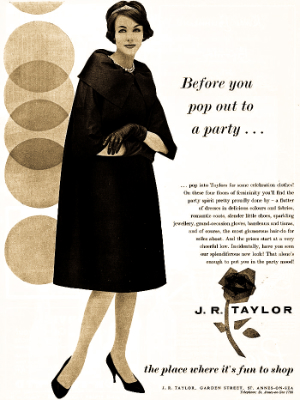 Garden” , the sunshine pop-jazz of “One Summer” and the faerie-folk number “An Evening In The Fall” are all early indications of a delicate touch and sensibility The instrumental “What’s Your Poison?” trips along in groove that owes something to Pentangle and Nick Drake while the title track and much of what follows drift along on a languid, dare one say soporific journey through a twilight world – more Sandman than Snowman. “Nostalgia Ever After” is a pleasant enough listening experience even if at times you want to grab it by the shoulders and give it a good old shake. Sweet dreams. http://www.blrr.org Garden” , the sunshine pop-jazz of “One Summer” and the faerie-folk number “An Evening In The Fall” are all early indications of a delicate touch and sensibility The instrumental “What’s Your Poison?” trips along in groove that owes something to Pentangle and Nick Drake while the title track and much of what follows drift along on a languid, dare one say soporific journey through a twilight world – more Sandman than Snowman. “Nostalgia Ever After” is a pleasant enough listening experience even if at times you want to grab it by the shoulders and give it a good old shake. Sweet dreams. http://www.blrr.org
The aforementioned Mr Snowman turns up on the BLRR label sampler “Music For Personality Disorder”. The first half showcases a host of mainly like-sounding artists who seem content to muddle along in a plodding groove which is to be honest borders on the repetitive and bland. As a collection it is largely forgettable. Things pick up a lot though during the second part (tracks 9 to 16) with Earthmonkey’s bonkers “Ahmet Another” (from the neatly titled “Alms of Morpheus”) setting the pace followed by a further kick up pants courtesy of “Terminus Est” by Seven Spells, a splendidly cathartic jazz/prog/rock romp if ever I’ve heard one. The perceptible change in mood and upturn in quality continue thanks to more jazz noise from Ilitch, Nadja’s “Skywriting” sounds like it is leading us back into the straightjacket of side one but builds nicely with an almost funereal drums and base and a portentous, faintly unsettling drone which, in its edited form here, links nicely (or should that be atmospherically) with Expo ‘70’s similarly inclined “The Gathering”. The remaining tracks are none too shabby either – The Silvermen’s downright spooky “This Side of the Door” would be my pick of these, although, Tecumseh’s riff monster “Apophosis” will appeal to the Sunn 0)) heads while Else Techer plays in the sweeper role with an electronic drone that spells a very definite thank you and goodnight. Definitely a game of two halves this one and I’d be inclined to skip the first of these.
www.blrrecords.com
Baltimore’s Lower Dens is the current project of singer-songwriter Jana Hunter. Their debut “Twin Hand Movement” features some impressive guitar work and for the most part decent song-writing that might be considered radio-friendly art-rock/new wave if it weren’t for the underlying edginess of the compositions and some choice song titles (“A Dog’s Dick”, “Truss Me”, “Two Cocks Waving Wildly Waving At Each Other” for example). Whilst the deliciously downy feel can occasionally seem a little unvaried and the song craft and vocals a bit wanting in parts there are a couple of noteworthy tracks here such as the woozy, narcotic “Plastic and Powder” and “Truss Me” and the more upbeat “Hospice Gates” and taken as a whole the album is certainly worth giving a spin. The overall feel is a bit like listening to the Wire spin-off band, Githead, and that can’t be altogether bad.
www.myspace.com/lowerdens
And now for something utterly delightful. “The Fields Lie Sleeping Underneath” is a collection of gentle, eccentric and at times child-like tunes inspired by the past and present of the London neighbourhood inhabited by Frances Castle, recording here under the name The Hardy Tree. Among the ten tracks are the tale of a tragic demise, dancing at the long gone Astoria Theatre (the Finsbury Park one and not the recently demised rock-grot palace off Oxford Street) and an affirmation that the memories of the past lie slumbering beneath today’s busy, hectic urban lifestyle. The overall sound is magical and ethereal, a bit like a dream where you are never quite able to reach the end of the journey to grasp the situation you suddenly find yourself in. If there is a bucolic and innocent charm to be derived from modern day London then Ms Castle has tapped into it. One part each of Nico, a string quartet on laudanum occasionally downing tools and playing children’s toy instruments instead and 70s kiddies’ TV programme Bagpuss, this here’s a tonic for the ears.
www.claypipemusic.co.uk
Orvis Otto is a live, improvisational recording project which uses no electronics, special effects or overdubs, so what you hear on “Dust Attracts Its Kin” is a pretty much organic sound played by four musicians on a plethora of stringed, piano and mallet instruments. Yet despite the array of instrumentation the music, presented in two movements spanning 50 minutes, sounds surprisingly simple and sparse if also rather charming and reflective. Here’s one to play when escaping from the stresses and strains of everyday life.
www.grottomimosa.com
Hailing from Michigan State, The Saw Had Eyes That Sea perform rather melancholy airs in what might be termed chamber-folk style on “Paper Thin Harmonies”. The gentle flowing songs and lilting harmonies place them in the same extended family as the likes of Fleet Foxes, Midlake and Bon Iver, yet titles such as “My Spectre”, “The Ghost of Orchard Lake Road” and “Maria: A Ghost Story” suggests you wouldn’t want to book them to get your party started. And if they also suggest to you eerie, BBC Radiophonic workshop effects (including a Theramin or bowed saw, it’s hard to tell which), then you are bang on the money. In fact the effects can get in the way a bit, such as on one of the standout tracks here, a beautiful composition entitled “Gossamer” which sounds like someone’s overdubbed with the backing tape to Hawkwind’s “Sonic Attack” and is a little bit like serving a delicate dish with a smothering of vindaloo sauce. Please don’t get me wrong, there is some nice writing here - as well as “Gossamer”, check out the likes of “The Middle of Your Street” and “Always” for instance - and the band deserves high marks for experimentation. It’s just that some of the execution (and that includes occasional flattening of the vocals) doesn’t always do it justice. All in all this is a bit like the curate’s egg, then – but it is pleasing to report that the good outweighs the not so good..
www.littlepocketrecords.com
And so to the curious case of Benjamin Finger, ladies and gentlemen. “For You Sleepsleeper” showcases the Oslo polymath’s distillation of his art into a very fine mostly ambient electronic album, but which also draws on field recordings and conventional instrumentation. The fact that it is very different from his solo debut of a couple of years ago is indicative of the man’s inventiveness and desire to keep moving. Odd song titles abound. The opening two numbers, “Infants Blue Gestures” and “Vertigo Neonate”, wash and rinse around the speakers and introduce the sort of muted, mumbled vocals that scream, rather than suggests, Boards of Canada. “Her Balcony Mouth” is a gentler and lighter affair, whilst the contemplative title track evokes the sprinkling of magic dust over the grateful insomniac. Other highlights include “Drowned in Elbows” featuring a saxophone as its central motif, around which is built some throbbing drum and bass and intelligent psychedelic noise to provide a soundtrack for the tribal campfire, and the haunting and subtle “Chunks of Plaster”, but honestly, there is little if anything to dislike about this album.
www.howisannierecords.com
Staying in Scandinavia, it was good to receive the latest full-length limited edition release from Finland’s Joonatan Elokuu, entitled “A Vagrant’s Whim”. For the most part this follows a simple formula of guitar and Elokuu’s soothingly soporific baritone, supplemented here and there by wife Helena on vocals and occasional other accompaniment. There’s not much to choose between the songs, all of which will delight in a lo-fi, late night, mellow sort of way. “Born Again with a Hedgehog Heart” features some sampled dialogue, possibly from a film (now that could be the quiz question this month), and “Nancy” continues with the spoken-word (Elokuu’s this time) while introducing some understated but evocative electronic backing, whilst “Like Christ and Osiris” features sitar and Indian Harmonium (and probably other things). Elokuu’s evidently an interesting and widely travelled chap with many a tale to tell, and this is all very pleasant and a fair enough if not quite essential contribution to the wyrd/alt/psych/whatever folk canon. Whim”. For the most part this follows a simple formula of guitar and Elokuu’s soothingly soporific baritone, supplemented here and there by wife Helena on vocals and occasional other accompaniment. There’s not much to choose between the songs, all of which will delight in a lo-fi, late night, mellow sort of way. “Born Again with a Hedgehog Heart” features some sampled dialogue, possibly from a film (now that could be the quiz question this month), and “Nancy” continues with the spoken-word (Elokuu’s this time) while introducing some understated but evocative electronic backing, whilst “Like Christ and Osiris” features sitar and Indian Harmonium (and probably other things). Elokuu’s evidently an interesting and widely travelled chap with many a tale to tell, and this is all very pleasant and a fair enough if not quite essential contribution to the wyrd/alt/psych/whatever folk canon.
www.utupuu.fi
Anja McCloskey’s five track EP, “Turn Turn Turn” draws on her American and German antecedence and demonstrates her skills on button accordion, a good strong singing voice (other instruments include guitar, violin, piano and clarinet. “Decision” holds up well in comparison with the likes of “Music For a Found Harmonium”; “Instigate It” nods more towards Americana; “Newton” mines Kate Bush/Joanna Newsom territory with melody and harmonies soaring over that insistent button contraption squeezing and a wheezing away in the background; “Ivory” tinkles just that and whilst lively enough seems the least compelling composition here, Bringing up the rear is “Stephanie Part II”, a folk-drone of almost hymnal solemnity and no little beauty. If you have 16 minutes or so to spare and your penchant stretches to down home dyed in the wood acoustic music and the female voice then there is a lot worse things you can be doing in that time.
www.myspace.com/anjamccloskey
”6 Miles east of here 5 miles north of nowhere” is the first solo album by Davey Woodward, whose previous credits include the Brilliant Corners and The Experimental Pop Band. It’s all very reflective and downbeat in tone, from the opening “Everyone’s Dying” and the repeated refrain of “why don’t you f**k off and leave me alone”, through “Shiver”, “Monsters”, “68 Daggers”, the murder ballad “Burger Bar” and so on and so forth the subject matter is about death, decay, despair, violence, murder and dysfunctional relationships that frankly ain’t worth a fig. Hopefully this is just an outlet for artistic expression and is not too autobiographical or you do worry for our hero. The songs themselves though are nicely crafted and executed, mostly acoustic and more often than not sung plaintively and/or in a semi-Dylanesque drawl. The “odd one out” and in many ways the most appealing track is “Copacabana Pills” (about losing the fight against the inevitable ageing process) which builds to a dirty, reeking, bump and grind groove for people increasingly unable to do just that, delivered in a deadpan style not a million miles from that of Laughing Lou. Also worth a mention is “The West Country” with it synthesizer orchestration and western soundtrack leanings (oh yes, it also features bulging veins and a bad moon rising), although despite, or perhaps because of its rather morbid preoccupation with the downside of life and death – and which of aren’t secretly drawn to this – Woodward’s slow burner works well over repeated listens. There’s got to be a market for this stuff (not to mention a few Coen Brothers-type film that could benefit from this as a score) and let’s hope he gets it together to give us more of the same and soon.
www.wearitwellrecords.co.uk
Electric Assembly is a London based three-piece drawin g on a range of influences most notably pysychedelia, shoegaze and the more ambient schools of drone and electronica, a heady blend resulting in a definite post-rock vibe. “Slow Exit” is billed as their third EP, presumably because it only comprising five tracks, although spanning 44 minutes it in fact is the perfect length for an album. “In Howls” kicks off proceedings with a lengthy workout pitched stylistically somewhere between the Cure and My Bloody Valentine and whilst it works well enough to a point it does become rather laboured over 12 minutes (half of that would have been just right), Elsewhere, the melodious and increasingly laconic air makes for a pleasing and fairly undemanding listen although it is almost as if the Assembly expended all its energy on the overly long track one and the rest of the EP seems.....to...................tail...........................off............ g on a range of influences most notably pysychedelia, shoegaze and the more ambient schools of drone and electronica, a heady blend resulting in a definite post-rock vibe. “Slow Exit” is billed as their third EP, presumably because it only comprising five tracks, although spanning 44 minutes it in fact is the perfect length for an album. “In Howls” kicks off proceedings with a lengthy workout pitched stylistically somewhere between the Cure and My Bloody Valentine and whilst it works well enough to a point it does become rather laboured over 12 minutes (half of that would have been just right), Elsewhere, the melodious and increasingly laconic air makes for a pleasing and fairly undemanding listen although it is almost as if the Assembly expended all its energy on the overly long track one and the rest of the EP seems.....to...................tail...........................off............
www.dreamdriven.com
To finish, a couple of discs that have been hanging around for a long time and need to be written about, thanks to Stefan, Steve and Ian for their time and effort and happy new year to you all.
The mix of acoustic guitar with fretless bass and cello, gives The Gentle Infidels a definte identity, one that is well served on the splendid “Insolents and Indolents” a collection of classy songs that maintains quality throughout. After the opening acoustic Zeppelin-esque strum of “Blackguard”, the beautiful “Passing Fancy” brings the cello to the fore whilst retaining that early seventies feel with delicate ease.
Using a host of different tunings in their songs gives “In This Tonight” a different, more delicate timbre, whilst the lengthy “A taste For the waste” aloows the band to stetch out and really shine. Finally the sweet sadness of “Mourning Song” ends the album with a gentle folk melody, the instruments weaving together with soft precision. (www.gentleinfidels.com)
Also opening with an eastern influenced Zeppelin-esque track, this time of a noisier persuasion, Glyn Bailey and the many splendid things pack “The Disturbance”, their latest album with a whole 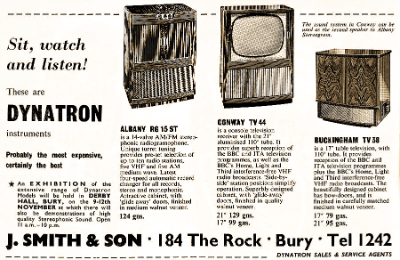 host of styles and influences including the guitar driven “The Old Illawalla”, which is the perfect start, the tale of a pact with satan and an old trunk. host of styles and influences including the guitar driven “The Old Illawalla”, which is the perfect start, the tale of a pact with satan and an old trunk.
As with his other albums, it is the lyrics that hook the listener in, the music adding weight to the words, reminiscent of the finer moments of Paul Roland, in their strangeness, with songs about being God for the day and the tree that killed Marc Bolan scattered amongst the gems within. In fact, “The Bolan Tree” is one of the album highlights, filled with twinkling piano and a catchy chorus. Another highlight is “Louis” a song about Louis Theroux, that has a rocky glam guitar riff, complete with a cowbell and a touch of funky horns. Across ten songs the album holds your attention, sounding like a classic seventies album, shades of Cockney Rebel or Be-Bop Deluxe also making appearance. Great stuff and well worth hearing. (www.GlynBailey.com)
Well, that's it for now so cheers and see you again soon for more Rumbling! (Simon)
Terrascopic Rumbles for January was brought to you by Simon Lewis, Stefan Ek, Steve Palmer and Ian Fraser. Artwork, layout & direction by Phil McMullen - copyright Terrascope Online, January 2011 |
